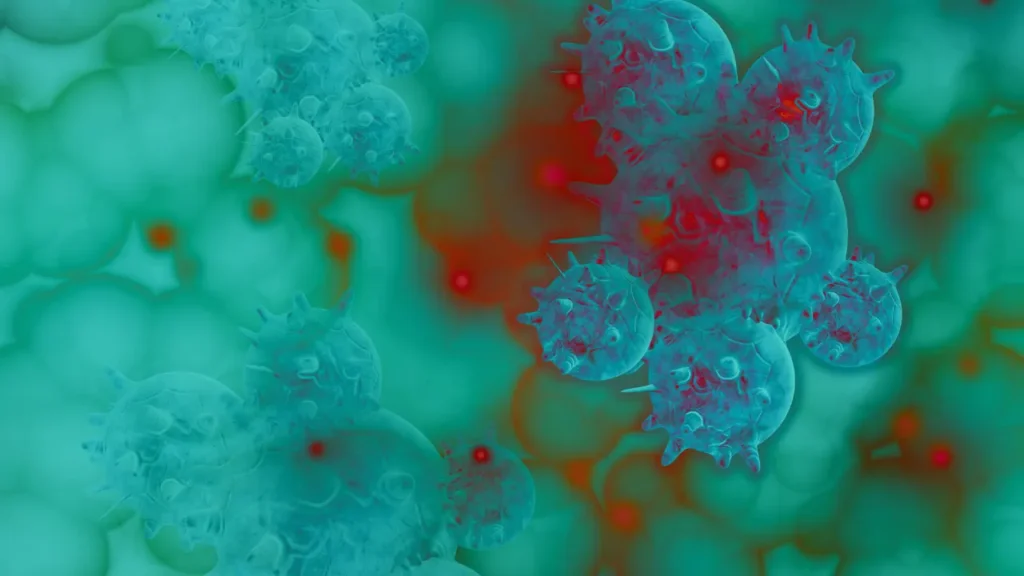Wood Anemone (Anemone nemorosa) is a perennial herbaceous plant native to Europe, Western Asia, and North Africa. The plant’s unusual white or pale blue flowers, sharply divided leaves, and creeping rhizomes set it apart. Wood Anemone has traditionally been used in folk medicine to treat a variety of diseases, including fever, rheumatism, and skin issues. This article will investigate the chemistry, physiological effects, ideal dosage, adverse effects, substance interactions, and responsible usage of Wood Anemone.
You May Also Like:
Nordic Naturals Omega-3 Phospholipids: Evaluation of a Leading Brain Health Product
Bladderwort: Benefits, Dosage, Side Effects, Drug Interactions, and Other Important Information
Wood Anemone: Benefits, Dosage, Side Effects, Drug Interactions, and Other Important Information is an original (NootropicsPlanet) article.
Nature of Wood Anemone
The perennial herbaceous plant known as Wood Anemone (Anemone nemorosa), which is a member of the Ranunculaceae family, is indigenous to Europe, western Asia, and North Africa. Deeply divided leaves, unique white or pale blue blooms, and creeping rhizomes are the plant’s defining features. Traditional folk medicine has employed wood anemone to cure a variety of illnesses, including fever, rheumatism, and skin conditions.
Health Benefits of Wood Anemone
Wood Anemone has been linked to a number of health advantages, mostly because of its bioactive ingredients. Listed below are a few potential health advantages:
a) Microbiological Activity
Wood anemone have been shown to possess antimicrobial properties due to anemonin and protanemonin content. These substances have demonstrated efficacy against a variety of bacteria and fungi, indicating that Wood Anemone may be helpful in treating illnesses brought on by these germs.
b) Inflammatory Qualities
Anemonin and protoanemonin also have anti-inflammatory properties. These substances have been demonstrated in studies to be able to reduce the synthesis of pro-inflammatory mediators including prostaglandins and leukotrienes, which may help treat illnesses brought on by inflammation.
c) Antitumor Function
Preliminary research have suggested that wood anemone may have anticancer potential. In experimental models, anemonin has been demonstrated to cause cancer cells to undergo apoptosis (cell death), which inhibits the formation of tumors. However, more studies are needed to establish wood anemone as a cancer treatment.

Chemistry of Wood Anemone
The wood anemone includes a wide variety of bioactive substances, including as sesquiterpene lactones, flavonoids, and triterpenoid saponins. The plant’s pharmacological activities are thought to be primarily mediated by two of these chemicals, anemonin and protoanemonin. Protoanemonin is unstable and can be hydrolyzed to produce anemonin, a dimeric lactone with antibacterial, anti-inflammatory, and anticancer properties.
Physiological Mechanism of Action of Wood Anemone
The physiological modes of action of wood anemone have been discovered as follows:
1) Mechanism of Antimicrobial Action
Antimicrobial effects of anemonin and protoanemonin are exhibited by breaking the cell membranes of bacteria and fungus, resulting in cell lysis and death.
2) Mechanism of Anti-Inflammation
Wood Anemone anemonin and protoanemonin have anti-inflammatory properties by suppressing the formation of pro-inflammatory mediators such as prostaglandins and leukotrienes which decrease the generation of these inflammatory mediators.
3) Anti-Cancer Mechanism
According to preliminary research, anemonin, is the key bioactive ingredients of Wood Anemone that lead to selective cancer cell apoptosis. However, additional research is required.

Optimal Dosage of Wood Anemone
Finding the ideal dosage for Wood Anemone’s use as a nutritional supplement is difficult because there aren’t many clinical studies on the plant. Additionally, it is crucial to exercise caution when taking Wood Anemone supplements because it also contains some toxic compounds. Before beginning any Wood Anemone supplementation, it is recommended that you speak with a healthcare provider.
Side Effects of Wood Anemone
Protoanemonin irritates the skin and mucous membranes and results in blistering. The plant can be consumed and cause gastrointestinal problems such as nausea, vomiting, and diarrhea as well as, in more serious situations, organ damage or even death. To avoid skin contact with Wood Anemone’s harmful components, it is essential to avoid swallowing the plant and handle it carefully.
It is not advised to consume Wood Anemone as a nutritional supplement without the advice of a healthcare provider because of the potential hazards involved.

Potential Substance Interactions with Wood Anemone
The lack of study on Wood Anemone makes it difficult to get information on possible drug interactions. However, care should be taken when combining Wood Anemone with other medications or dietary supplements due to the plant’s toxic qualities and the presence of bioactive compounds with pharmacological effects.
1) Antiplatelet and anticoagulant drugs: Wood anemone may potentially interact with anticoagulant and antiplatelet drugs like warfarin, aspirin, and clopidogrel because of its anti-inflammatory properties. Before deciding to supplement with Wood Anemone, it is advised to speak with a healthcare provider because doing so could raise the risk of bleeding.
2) Nonsteroidal Anti-inflammatory Medicines (NSAIDs)Nonsteroidal anti-inflammatory medicines (NSAIDs), including ibuprofen, naproxen, and diclofenac, may interfere with the anti-inflammatory properties of wood anemone. Combining Wood Anemone with NSAIDs may raise the risk of side effects, including kidney damage and gastrointestinal bleeding. Before combining Wood Anemone with other medications, it is best to speak with a medical expert.
Responsible Usage of Wood Anemone
Consider the following suggestions to ensure the most ethical use of wood anemone as a dietary supplement:
1. Before beginning supplementing, speak with a healthcare provider, especially if you are pregnant, nursing, have a pre-existing medical condition or are taking medication.
2. Wood anemone should not be consumed as it is because it contains poisonous substances that may have negative side effects.
3. Handle wood anemone carefully to avoid coming into contact with any of its harmful components on your skin.
4. To reduce the risk of adverse effects and potential interactions, use Wood Anemone under the direction of a healthcare expert.
Wood Anemone:
Conclusion
In conclusion, the Wood Anemone is a perennial herbaceous plant that is indigenous to Europe, western Asia, and North Africa. Wood anemone stands out as a botanical marvel due to its high content of bioactive ingredients which exert anti-microbial activity and anti-inflammatory properties. Aside, it is also shown that this plant may carry anti-cancer potential. The anti-cancer properties are contributed by the key bioactive ingredients within wood anemone which is anemonin.
However, the phytochemistry of this plant should be further studied as it carries a lot of potential. If you are interested, you should thoroughly research and ask the healthcare professionals before incorporating Wood Anemone supplements into your routine. The side effects of wood anemone include nausea, vomiting, and diarrhea. Hence, you should immediately stop the use of this supplement if you experience any side effects.

References:
- Anemone Medicinal Plants: Ethnopharmacology, Phytochemistry and Biology. Retrieved from:https://www.ncbi.nlm.nih.gov/pmc/articles/PMC5343163/
- In Vitro Anti-Proliferative Activity and Mechanism of Action of Anemone Nemorosa. Retrieved from:https://www.ncbi.nlm.nih.gov/pmc/articles/PMC6429291/
- Studies On Anemone Nemorosa L. Extracts; Polyphenols Profile, Antioxidant Activity, and Effects on Caco-2 Cells By In Vitro and In Silico Studies. Retrieved from:https://www.degruyter.com/document/doi/10.1515/chem-2022-0137/html?lang=en
Important Note: The information contained in this article is for general informational purposes only, and should not be construed as health or medical advice, nor is it intended to diagnose, prevent, treat, or cure any disease or health condition. Before embarking on any diet, fitness regimen, or program of nutritional supplementation, it is advisable to consult your healthcare professional in order to determine its safety and probable efficacy in terms of your individual state of health.
Regarding Nutritional Supplements Or Other Non-Prescription Health Products: If any nutritional supplements or other non-prescription health products are mentioned in the foregoing article, any claims or statements made about them have not been evaluated by the U.S. Food and Drug Administration, and such nutritional supplements or other health products are not intended to diagnose, treat, cure, or prevent any disease.


